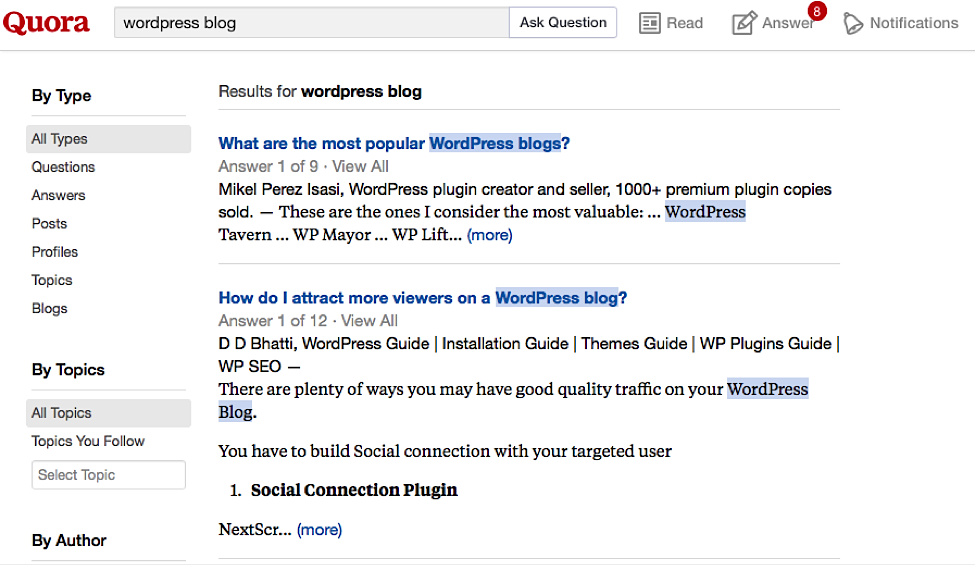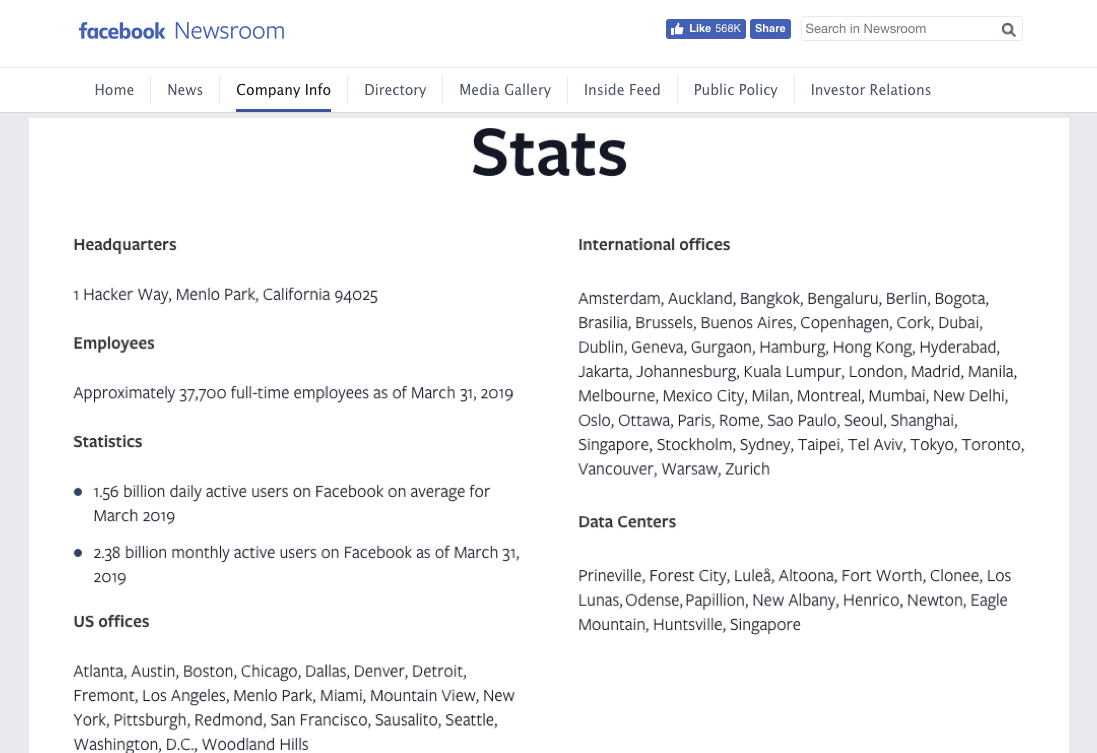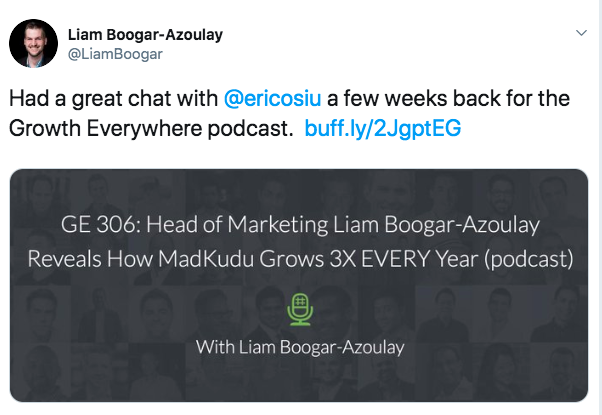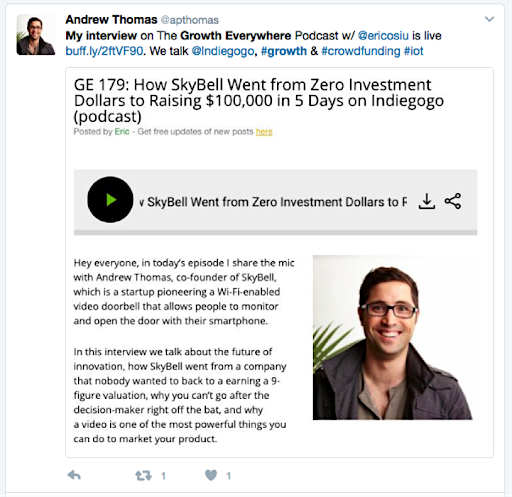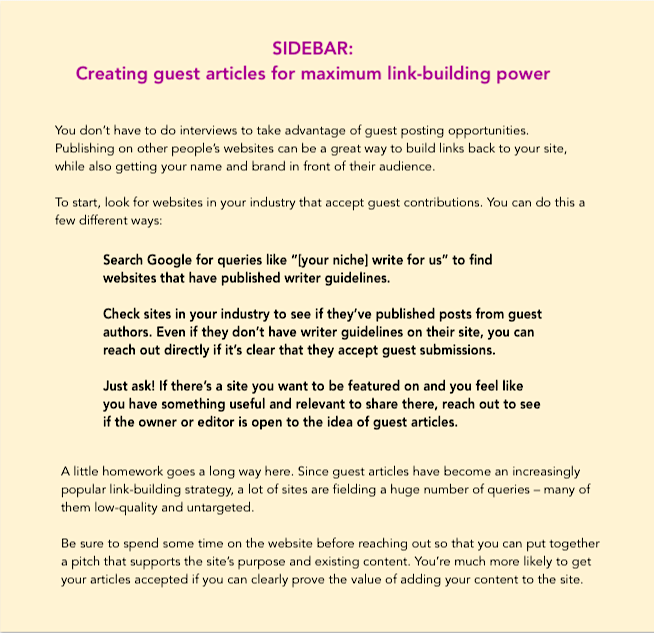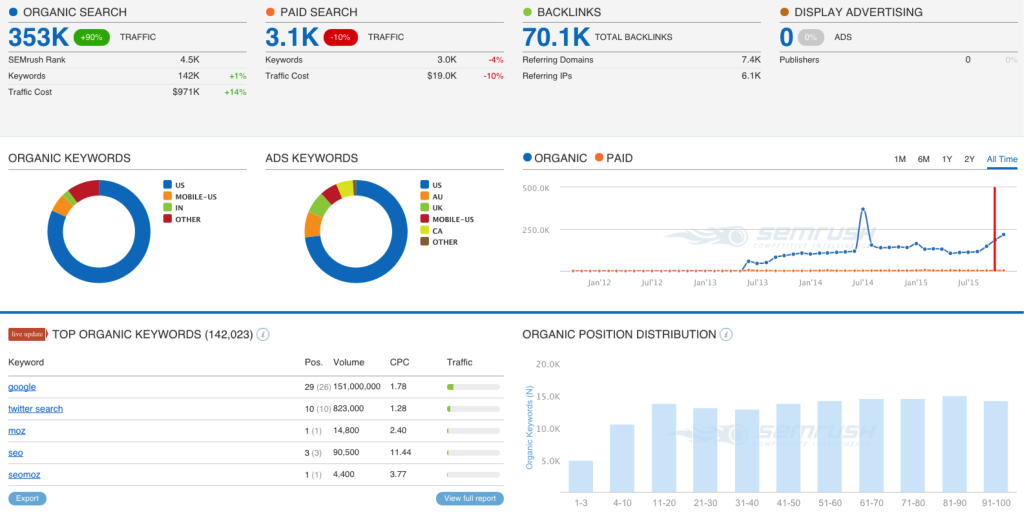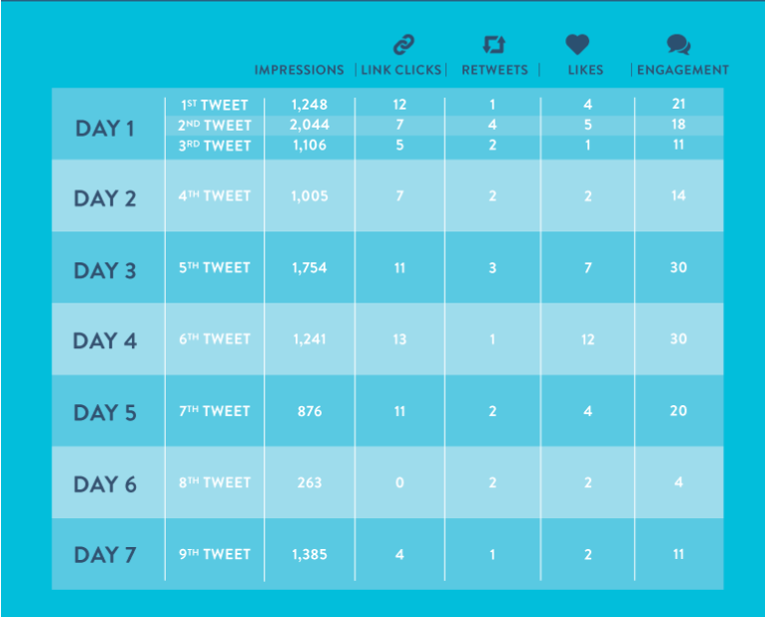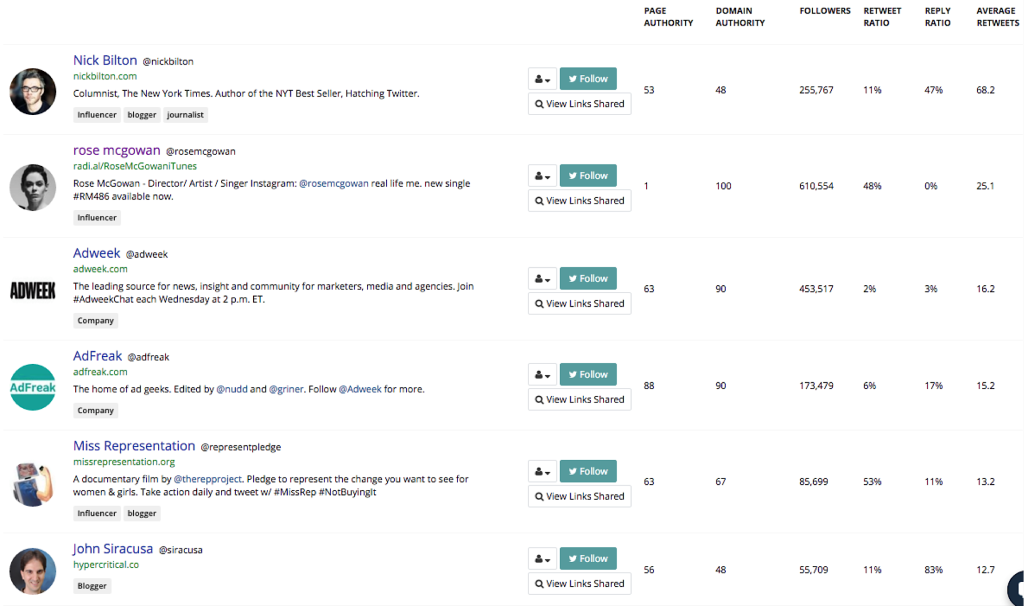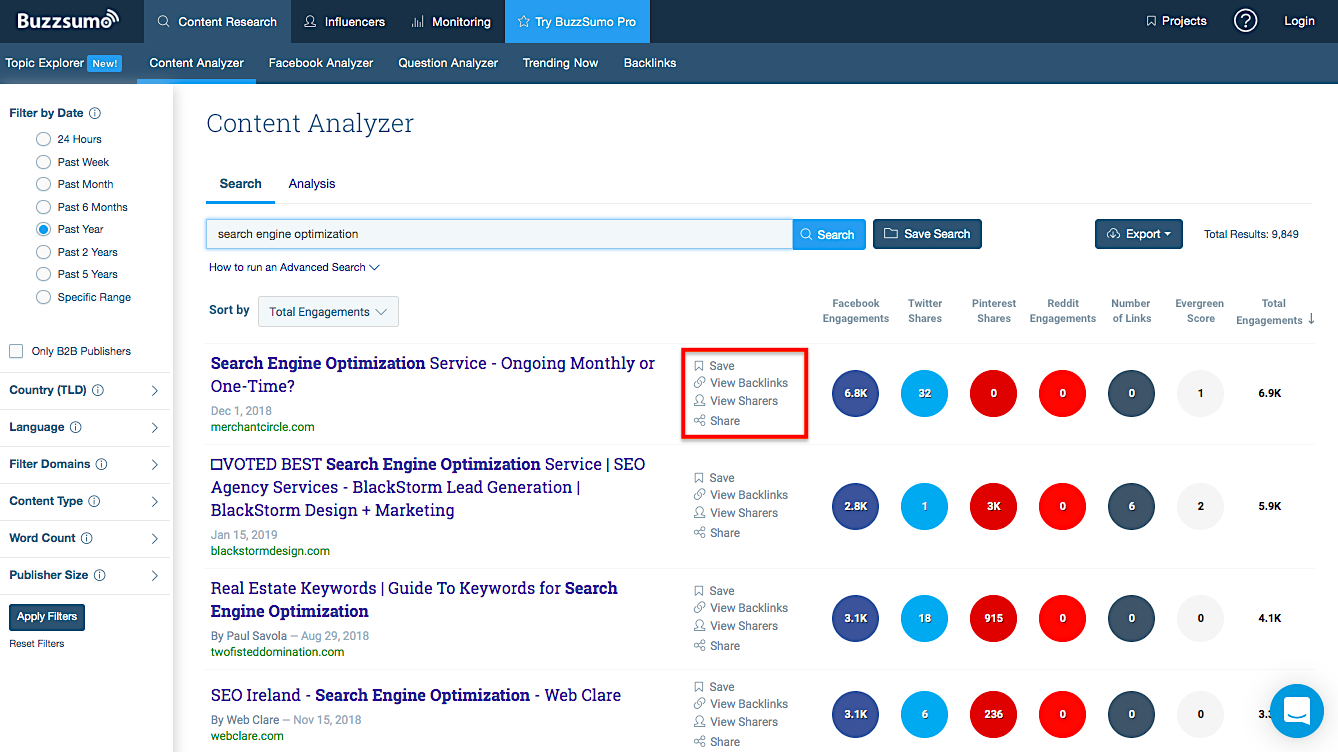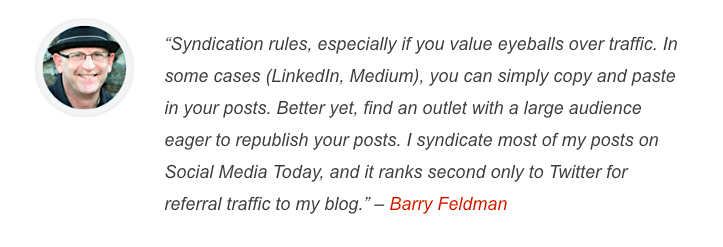The Ultimate Guide to Link Building with Content for SEO
[Free Consultation] Are you spending money on advertising but not getting the results you want? Are you looking for more sales and leads but have no idea where or how to start? Get help from our world-class marketing experts in a free consultation call.
Click Here To Schedule Your Free Consultation Now
Search engines are constantly evolving their algorithms to ensure that the highest-quality content is surfaced in response to user queries. And as far as they’re concerned, receiving a high volume of quality links from external websites suggests that your content falls closer to trustworthy than spammy on this spectrum.
But that’s only part of what makes creating valuable content and investing in inbound marketing so valuable these days. Because 86% of B2C organizations and 91% of B2B organizations use content marketing, failing to invest in content puts you at risk of being left behind.
In this guide, I’m going to share the tactics that will help you create linkable high-quality content for your website as well as use that content for link building to your website.
TABLE OF CONTENTS: ↓
What Is High-Quality Content?
Before we jump into tactics, let’s get some background information out of the way.
You’ve probably noticed that a lot of link building and SEO guides focus on creating high-quality content. There’s a good reason for that: it’s far easier to build links to top-quality content because that’s what gets shared.
Businesses and individuals are constantly in search of quality material to link to so that they have something of value to offer their website visitors. As you’ll notice, few people link to a homepage, product page or shopping cart.
Of course, there’s a difference between creating content that is simply stuffed with keywords and links and creating top-notch blogs and articles that are specifically geared towards helping you build authoritative links to your website.
And just to be sure we’re speaking the same language, here are two important definitions:
- Content marketing refers to creating and sharing content (articles, blogs, infographics, videos) for the purposes of driving traffic to your website and moving visitors through your marketing funnel in order to acquire new customers.
- Link building is when you get other websites or blogs to link to your site’s page in order to improve your search engine rankings. The engines crawl the web looking for links between your web pages and other websites to decide how valid your content is and thus where your page should rank in their search results. 58% of SEO professionals believe that backlinks have a big impact on search rankings. So if you want to invest in link building, you need high-quality content resources.
Here’s how to kick the process off.
Dive Deeper: Absolutely Everything You Need to Know About 10x Content
Part 1: Creating Linkable High-Quality Content
In the introduction, I explained that linkable, well-crafted content can help you build links to your website. But let’s step back for a moment and explain what exactly quality material is.
- Is well-researched and provides accurate information
- Speaks directly to your target audience
- Contains impeccably written copy
- Uses supplemental images, graphs, videos or infographics, when appropriate
- Is as complete and up-to-date as possible at the time of publishing
Succeeding with these five points requires that you start the content creation process with in-depth research. Without this background, you won’t know what’s truly “high-quality” within your niche.
Understanding Your Industry’s Content Landscape with the Skyscraper Technique
To see where you stand out with content, we’re going to use a process called the Skyscraper Technique. Coined by Brian Dean of Backlinko, the Skyscraper Technique involves three steps:
- Step 1: Find link-worthy content
- Step 2: Make something even better
- Step 3: Reach out to the right people
As a side note, since his original publication, Dean has expanded the Skyscraper Technique to a “2.0” version that takes keyword intent into consideration. His post on the changes is well worth the read if you’re serious about successful content.
All this research might make your content longer, but that’s a good thing. According to another study in which they analyzed 912 million blog posts, long-form content gets more backlinks and social shares.
For example, Dean found that “Content longer than 3,000 words gets an average of 77.2% more referring domain links than content shorter than 1,000 words”:
The ideal content length for social shares, according to Dean’s research, is a little shorter. But it’s still important to write at least 1,000 words per post. He says, “According to our data, long-form content generates significantly more social shares than short content. However, our research indicates that there’s diminishing returns once you reach the 2,000-word mark”:
Dive Deeper: The Skyscraper Technique: How to Build High-Quality Backlinks to Your Content
Choosing a Topic for Your Content
Keeping the principles of the Skyscraper Technique in mind, do some basic searches on Google to get a feel for the content that’s already out there in your industry. Start by Googling common questions or queries related to your business:
Pay attention to the drop-down “search suggestions” on Google. This will show you which keywords and phrases people use the most to find out more about your topic. Each of these search suggestions could become a topic that you explore in greater detail in a content piece.
You can also use sites like Quora to uncover more about the questions people are asking in your industry. For example, you can type “wordpress blogs” into Quora’s search bar to see the most common questions:
This process may help you identify new angles that you can take on existing topics. If everyone is talking about the technical side of starting a WordPress blog, you could talk about the psychological side. If everyone is writing generic articles on how to get more traffic to a WordPress site, you could write niche-specific articles.
BuzzSumo is another great tool for this process. Use it to search for either industry-specific keywords or your competitors’ websites, and you’ll be able to see the most popular content pieces over a set period of time, as determined by social shares:
From your research, try to come up with 5-10 possible content piece topics. Choose one to start with, based on what your research has told you about the topics that your audience is most interested in, as well as your own understanding of what your prospects and customers need to hear from you.
Dive Deeper: 10 Ways to Generate Topics and Write High-Ranking Blog Posts
Creating Expert-Level Content: 5 Strategies to Test
With your topic ready, it’s time to start writing. But if you still aren’t sure what to put in your articles, consider the following five strategies for ensuring that your finished product supports both your website visitors and your future link-building efforts.
1) Finding Existing Research to Cite
Don’t just make assumptions in your article. Backing up any statements you make in your content makes it stronger, increasing the odds that readers and others in your industry will link to it as a reference.
It’s one thing to say, for example, that Facebook is the most popular social network on the planet, but without the numbers to back it up, it just comes off as opinion. But when you write that with 2.38 billion monthly active users, Facebook is the most popular social network on the planet, this is no longer opinion; it’s fact-based writing with the statistics to back it up. This is what separates the experts from the amateurs.
Cite specific sources for every one of your claims throughout your article so that readers instantly get that they are looking at a well-researched piece of content. This gives them a reason to trust you and link to your content rather than content written by others. It also allows the readers to dive deeper into the subject to which you sourced if that interests them.
Finding these sources of existing research is pretty easy. If you’re writing an article about Facebook advertising, you could search for “Psychology of Facebook ads,” “Facebook ad research” or “Facebook ad case studies” to find interesting research to cite in your post:
In-depth, well-researched articles are the type of posts that readers bookmark and visit over and over again.
2) Creating Your Own Custom Research
If you want to go further, keep in mind that research in and of itself can be highly shareable.
For example, imagine that you conduct a survey of several hundred webmasters on trends they’re seeing by using a tool like SurveyMonkey or Jotform (Note: As of November 1, 2022, Google Surveys is no longer available). You can take the conclusions and trends that come out of that work and publish them in your content – as a chart-heavy guide or infographic, for example.
Content creators are always looking for sources to cite. When they go looking for research to support the content they’re creating, you’ll earn backlinks when they cite your work.
3) Quoting Industry Experts from Existing Sources
Another way to add credibility to your writing is by using quotes from industry experts (aka, anyone with authority in your niche).
For example, I could say that link-building methods of the past will no longer help your website. But again, that’s just opinion, and unless you already consider me an expert, you won’t necessarily pay heed to it:
On the other hand, if I say that John Mueller of Google suggests that webmasters should focus less on link building as it’s been done in the past and instead focus more on creating high-quality content that is easy to link to, I have now added an expert opinion from Google – a source that most people trust. All the better if I can use word-for-word quotes that are hyperlinked to the source.
Even if someone has never heard the name John Mueller, the fact that he is from Google makes him an instant expert in the area of SEO. When you can’t find specific research or statistics, expert quotes are the next best thing to back them up.
In addition to making your content higher quality by adding expert opinions, you have also added influencers to the article who might actually help you promote it.
Even if Mueller doesn’t link to your content, he might share it with his 55.8K Twitter followers, which may in turn prompt one of his fans to share it with their own audience or link to your content.
For that reason, popular blogs in your industry can also be recognized as go-to expert resources for research and statistics. For example, if you’re in the marketing space, you can cite data from blog posts on sites like:
When your readers see that your claims are backed up by expert opinions – even if all you’ve done is copy them from existing content – they’re more likely to trust your articles, and they’re more likely to mentally associate you with that expert.
If you cite a blog post as your resource, you can email an editor from that blog and mention that you linked to them. Then you can ask them if they’d be willing to link to a specific post of yours in return.
4) Conducting Your Own Interviews for Custom Quotes
Another way to get backlinks from experts in your field is by interviewing them.
In many cases, interviewing experts in your field is a better way to get backlinks than by just linking to their content.
There are a couple reasons for this:
- Emotional investment. An expert in your field will feel more of an emotional investment in your content if you interview them rather than just giving them a backlink. They’re spending more time and energy interacting with you and, as a result, they’re more likely to do favors for you in the long run.
- More value added for the expert. Interviews allow thought leaders and experts to share their story with more people. They’re able to promote products or services, build their brand, and interact with a new audience on a relatively deep level.
When we interview entrepreneurs and marketers for our Growth Everywhere podcast, they usually share the content or link to it on their own blog or social media:
Experts typically like to do interviews for people who already have an audience. But if you don’t have an audience already, there’s another option: offer to interview them for a major publication.
Approach a blog like Business Insider, Huffington Post, etc. and ask them whether they would be interested in publishing a blog post where you interview a specific expert in your field. If they say yes, you can then approach that expert, interview them, and write the blog post about it.
For example the above example is a blog post I wrote for Entrepreneur.com featuring Brenton Hayden – the 28-year-old who built a $28 million empire from his own businesses.
5) Citing Specific Resources to Create Credibility
Finally, always look for opportunities throughout your content to assist your readers and give them actionable assistance by mentioning specific resources. For example:
- Don’t just say that people should try various SEO tools. Recommend your favorites, like SEMrush for paid search advertising research and Monitor Backlinks for link profile monitoring.
- Don’t just say there are tons of great beginner’s guides to SEO. Provide a few examples, like Moz’s Free Beginner’s Guide or Buffer’s Complete Beginner’s Guide.
- Don’t just say there are lots of SEO experts. Mention the ones that you frequently refer to, like Bruce Clay, Loren Baker, Dr. Pete Meyers, John Rampton, or Single Grain. 😀
Better yet, don’t just include links – include images that show what people will find when they click through to one of your recommendations, like this quick peek at a report from SEMrush:
For the average reader, this adds more value to your content because you are giving them additional resources that provide substantial information.
You have also added more opportunities to connect with people to let them know that you have featured them, their resource or their product in your latest piece of content.
Resulting shares based on “ego-baiting” (creating content that features an influencer for the purpose of getting a link or share from them in return) have the potential to create new links.
In addition to “ego-baiting” on your own blog, you can write guest posts for other major blogs where you feature experts in your industry. If you write a guest post on a site like HubSpot, Search Engine Journal or Moz and feature thought leaders in your field, that tends to make it easier when approaching them for backlinks.
And in the future, when you post on your own blog, you’re more likely to get backlinks from them because they’ll already know your name.
Dive Deeper: 4 Ways to Signal to Google that You’re an Expert Content Creator
Part 2: Building Links to Your Linkable High-Quality Content
Once you’ve published your linkable high-quality content, your next goal is to actually build links to it.
If you remember from the Skyscraper Technique article mentioned earlier, the final step in the process is sharing your new work with the world. There are plenty of ways to do this, including:
- Playing the numbers game
- Getting as much exposure for your content as possible
- Reaching out to the people most likely to link to your content
- Answering questions
- Syndicating content
Each of these steps plays a vital role in getting links to your linkable high-caliber article. Let’s take a look at each one in a bit more detail.
Playing the Numbers Game
The first step is playing the numbers game. The number of social shares, the number of votes and the number of comments you receive on your content all play a role in convincing people that your piece is valuable, popular and, ultimately, link-worthy.
This is why the second after you publish your content you need to start building up these numbers. Begin by sharing it on all your social media networks and scheduling it to publish multiple times (since your audience won’t all see it the first time you share it).
An experiment by CoSchedule found that sharing the same piece several times led to new engagement with each post:
Also, be aware that the way you share your content on social media can influence how much engagement it receives.
For example, according to KISSmetrics, “photos get 53% more likes, 104% more comments, and 84% more clicks on links than text-based posts.” Even if your content piece is text-based – like a blog post – sharing it through an image update, rather than a text one, may increase its social shares.
You can also submit your content to popular voting networks like:
- Growth Hackers for marketing content
- BizSugar for business content
- subreddits for any kind of content
But be careful. These communities tend to be sensitive to self-promotion. You’ll see the best results if you engage with them actively on a regular basis – not just when you have something to share.
Finally, get comments. The best place to start is your email list. Send out a broadcast announcing your post and at the end of the email provide a clear call to action: that people stop by and share their thoughts on your blog post.
From there, try out the groups on Facebook that are built specifically for bloggers to reciprocate one good comment for another.
Learn More: Putting Together a Social Media Team for Your Brand
Earning Social Exposure
The next step is exposure. The more people that you reach with your content, the greater the number of links you’re likely to get from them. The fastest way to get exposure with your target audience beyond simply sharing it on your social accounts is through social media advertising. Specifically, create ads for:
Do some social media outreach by finding people who have shared similar content using the pro version of BuzzSumo:
If you can find direct contact information for these people, trying emailing them (Hunter is a great tool for finding email addresses). Otherwise, tweet or DM them about a post they shared and that you have a good one on the same topic you think they’d be interested in. Start with those sharers who have the most followers and retweets and work your way down the list.
Just in case your outreach is ignored, you can also combine tactics by exporting lists of people from BuzzSumo who have shared similar content and then create Tailored Audiences for Twitter ads using their usernames. This is a great way to craft a relevant remarketing campaign for your target demographic.
Since Twitter takes a while to create Tailored Audiences, you might want to do this research prior to publishing your content so that your Tailored Audiences are ready when the content goes live.
Dive Deeper:
- Do Twitter Ads Really Work? (Or Should You Focus on Other Platforms?)
- The Ultimate Guide to LinkedIn Ads
- 30 Winning Facebook Ads and Why They’re so Effective
Reaching Out to Influencers
Now it’s time to reach out directly to the people who are most likely to link to your content. If you’ve quoted or interviewed people in your content, start there. Otherwise, look for bloggers who are already linking to similar pieces.
BuzzSumo also offers a feature that allows you to view the articles that link to this piece of content, so as you are viewing sharers, look at the linkers too:
BuzzSumo makes your backlink research valuable by showing you only content backlinks — i.e. links to content from other pieces of content. Seeing the social share potential of the blog will also help you determine if it’s a quality website that will drive traffic to your own site.
Using the results from that report, reach out to the blog author as well as the author who created the link to the similar post and let them know about yours. You’ll have a higher rate of success if you aim for the most recent posts, as they are more likely to be recently updated, as well as posts from authors who write link roundups, like Marketing Day.
From here, start looking for additional link roundups in your industry. They will usually have keywords like:
- [your topic] roundup
- best [your topic] links
- best [your topic] posts
- best [your topic] articles
- top [your topic] links
- top [your topic] posts
- top [your topic] articles, etc.
Reach out to those people directly so that they can include your content in their next edition.
Also be on the lookout for people who do roundups by email. In the SEO world, the holy grail is the Moz Top 10. Subscribe to their emails (preferably in advance), familiarize yourself with the content they share, and then reply to the latest one to let them know about your suggestion for their next email. Subscribers to those emails might have blogs of their own and might link to yours.
Dive Deeper:
- Influencer Marketing for SEO: How to Build Links with Influencer Outreach
- What Is Link Roundup Link Building: The Practical Guide
Answering Questions with Your Content
Next, look for ways to answer questions with links to your content. Search for these opportunities in Q&A networks like Yahoo Answers and Quora, forums, and social media groups:
Put some time into this strategy. As more and more marketers use Q&A forums to promote their content, getting noticed has become more competitive. If your only goal is to get a link for your content on a site like Quora, standing out might not be your priority. But why not take advantage not just of the SEO benefit of the link, but of the perceived authority and influence that comes with proving your knowledge when answering questions?
Syndicating Your Content: Why Syndicate?
Once you’ve created a piece of content, you can also look for other sources where it can be syndicated, resulting in a link back to your website as well as greater exposure.
According to marketer Barry Feldman:
Choose sites where you know your target audience spends time. For example, if you mostly work with business owners, you’ll want to look at LinkedIn’s Pulse platform. Sites like Alltop and newer content curation services like Quuu can get the word out about your content while increasing your link-building potential as well.
Not all of these platforms will create SEO links, but they will allow you to gain more exposure for your content in a helpful way. And more exposure has the potential to lead to more links.
Dive Deeper: Why Content Marketing Should Always Be 20% Creation and 80% Promotion
Building High-Value Backlinks with High-Quality Content
Here is a quick rundown of the steps to building links with content:
- Create linkable high-quality content that is valuable, accurate, up-to-date, complete and 1,000+ words.
- Include specific research, expert opinions and resources.
- Build social proof immediately after publishing by getting social shares, votes and comments.
- Get exposure through social advertising and social outreach to people who share similar content.
- Get links through direct outreach to people who link to similar content.
- Get links by answering questions on Q&A networks, forums and social media groups, as well as by syndicating your content to relevant sites and platforms.
If you follow these steps each time you write an epic piece of content, you will ultimately create a library of linkable high-quality content on your website that drives up the overall authority of your domain with great, editorial links.
If you’re not an SEO-savvy marketer or you just don’t have the time, Single Grain can help you! We’ve helped businesses of all sizes improve their marketing ROI, ultimately increasing revenue – check out some of our case studies here.
Click the orange button below for your FREE marketing consultation to see how we can help you. (Just wanna geek out about SEO? That’s cool, too! Let’s chat.)




